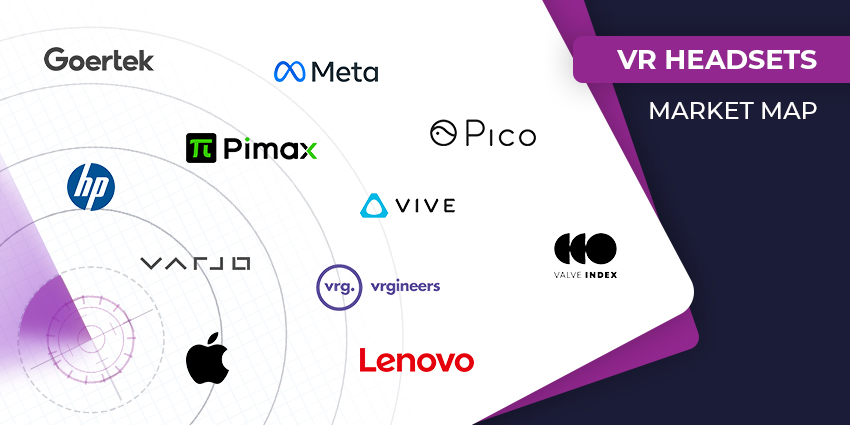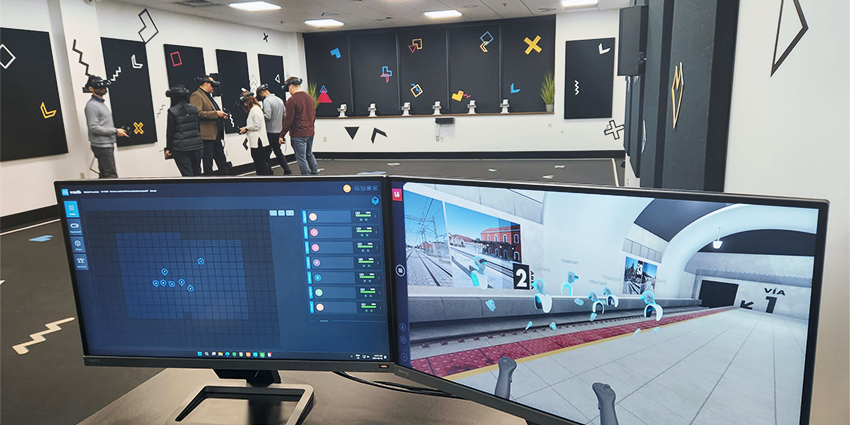Digital human technology takes artificial intelligence (AI) applications to a whole new level. It purports that you can have 3D, almost photorealistic renditions of human beings in the virtual world that are indistinguishable from the real thing.
As business leaders and users, in general, become more comfortable with widespread application of AI, digital humans are no longer limited to a futuristic theory.
There are several companies making impressive progress with digital human development and recent conversations around the rise of the metaverse make digital humans more pertinent than ever before.
Let’s explore what this technology means for XR users and how it could transform experiences in the virtual world.
Understanding What is a Digital Human
Digital humans can be defined as 3D virtual objects that look almost exactly like human beings and can replicate human traits such as physical movements, facial expressions, conversational to-and-fro, and the like.
It should be noted that digital humans may or may not reflect a real-world human being – i.e., there may or may not be a real person with the same name, physical appearance, and bodily characteristics.
They are independent 3-dimensional objects existing in virtual worlds, much like chatbots or voice bots that we are used to today.
Digital humans rely on a complex combination of technologies for their functionality. These include:
- Artificial intelligence to process input and provide feedback
- Natural language processing to understand voice commands
- Advanced 3D modelling to replicate expressions of human emotion with precision
- Natural language generation so that the digital human can respond via voice
This could be the next step in the evolution of automated virtual assistance as we know it. Instead of having a chatbot respond to our queries or a voice assistant fetching information from an online repository, digital humans provide a convenient and seamless support experience by presenting a human face.
Before we look at the myriad applications of this technology, let us consider another associated concept briefly.
Digital human vs. digital twin of human: what’s the difference?
While digital humans and digital twins are based on similar technologies (i.e., recreating real-world objects and beings in the virtual world), they have some major differences. To begin with, digital humans may or may not have a real-world counterpart.
A digital twin of human, on the other hand, is necessarily based on the physical, biological, anatomical, and often psychological traits of a real person.
Digital twins will always react like real people when presented with an input scenario.
Also, the digital twin of human may or may not have a 3D photorealistic form. It may only be a set of data specifications that capture human movement, requirements, and thought processes without assigning to it an outer manifestation.
Potential Applications of Digital Human Technology
Digital humans have become increasingly popular and frequently discussed in the mainstream over the last three to five years.
As the fourth industrial revolution converges the physical world with the virtual or digital, it makes sense that users will seek lifelike experiences even when online.
This is exactly what digital human technology offers, with applications like:
Virtual assistants in the metaverse
This use case has already been deployed by several industry leaders, including Deloitte. Automated virtual support has always been slightly impersonal and not very delightful, if efficient.
Digital humans overlay a comforting “human” face on top of an automated frontend, making customers more likely to engage.
This has major implications for the metaverse where users are already interacting via avatars and so support should also be provided by a humanoid being.
Simulated tests in industrial and healthcare scenarios
This use case is typically addressed by digital twins, but digital humans also have the potential to help.
Consider scenarios where you have to check an office layout design for optimal occupancy during COVID – it is helpful to have multiple digital humans populate a virtual mock-up of the design to understand how a real-world scenario might play out.
More authentic NPCs for gameplay
By applying the principles of digital humans to non-playing characters (NPCs), it is possible to make gameplay more authentic, immersive, and engaging. The sophisticated AI algorithms powering the humanoid NPC would ensure that they provide believable reactions to in-game scenarios. Also, facial expressions, bodily movements, gestures, and other non-verbal cues could add another dimension to gameplay design.
Soft skills training in the enterprise
Soft skills training has always been somewhat of a challenge, as it isn’t very easy to scale or deliver without the intervention of human instructors.
Digital humans have the potential to bring the convenience of massive open online courses (MOOCs) to soft skills education. Learners could walk through the training exercise in a virtual world, practice their skills with a humanoid being, get feedback, and gradually improve over time.
Social media influencer marketing at scale
Influencer marketing is among the most high-ROI top-of-the-funnel marketing tactics that a company could adopt – but it is also complex and time-consuming. Real human influencers are hard to identify and even harder to onboard, train, and retain.
Digital humans offer an alternative, where companies may put a familiar, human face to a digital being, but use fully automated technologies to power marketing strategies at the backend.
Who’s Making Notable Moves in This Space?
There are several companies already making advancements in this new-age technology. Top players include:
- Soul Machines – A New Zealand startup building Digital People and autonomous animation systems for customer experience.
- UneeQ – Conversational AI with a human face
- Unreal Engine – A 3D creation tool that provides you with a MetaHuman Creator to build custom digital themes
Potential Concerns
Ostensibly, there could be concerns around broaching the uncanny valley and causing a counterintuitive effect where humans do not feel comfortable speaking with AI.
Also, users may be more likely to share their own data with a humanoid interface – regulations need to be in place to protect user privacy.
Finally, as digital humans remove the need to employ real people for jobs like routine customer service in banks or mandatory soft skills training in corporates, reallocation of talent will be a top priority.






